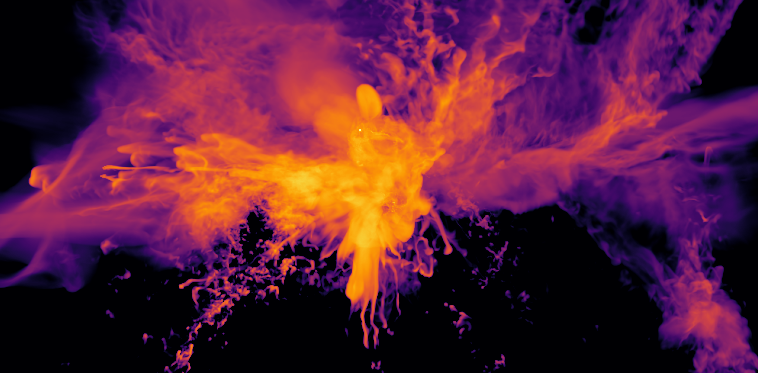Circumgalactic Absorption
the gas around galaxies seen in the absorption of background sources

The most common way to observe the circumgalactic medium is via absorption towards a bright background light source (usually a quasar). This means that while we want to know the full 3-d information of the gas, instead of observing images like the above (a map of triply ionized silicon, Si IV, at z=2.75) we are limited to 1-d skewers from which we try to back out the underlying physical information.
The movie below shows the build-up of an absorption-line system at z=2. The slice shows the neutral hydrogen density, with the white line showing the extent of the spectrum in each frame. The purple lines denote physical quantities along the line of sight, while the orange lines show transmitted flux versus relative velocity (in km/s, as shown on the bottom axis) in four commonly observed ionic transitions. The peculiar velocity and thermal broadening of the gas maps the features seen in the physical space shown in the purple lines to the velocity-space shown in orange.
Publications:
Peeples et al. (2019) "Figuring Out Gas and Galaxies in Enzo (FOGGIE). I. Resolving Simulated Circumgalactic Absorption at 2 ≤ z ≤ 2.5"
arXiv:1810.06566, ApJ, 873, 2